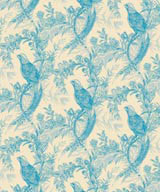Going local
Max Fraser explores why a growing number of designers are favouring local handicraft skills and niche production over mass consumption.

For many of us, ‘globalisation’ has become a mainstay of our vocabulary when we talk about mass production. The accessibility of information on the Internet means you are never far from the source of creation. Travelling has become so cheap and easy that borders are only playing a marginal role. Welcome to the global village.
The danger is that this information overdrive becomes a recipe for the standardisation of ideas. ‘We are all reading the same books, watching the same movies, looking at the same magazines, listening to the same music – we’re even drinking the same soda,’ says US designer Karim Rashid. ‘Inevitably, our creative manifestations are starting to be the same. The concept of creative, simultaneous discovery is based on shared information and so, in turn, the ideas are becoming similar.’
The operations of many of Rashid’s clients, and other designers, span the world: headquarters in the US control business divisions in Europe and Asia, for example. In response, designers have had to become more mobile.
These networked big players of the consumer goods world buy, produce and sell globally. With competition rife, producing similar ideas or items of anonymous mediocrity no longer provides stability. Manufacturers are waking up to the fact that design and innovation must be implemented to carve a unique direction for their business, siphoning heavy investment into R&D and marketing. Such outlays strain company infrastructure, on top of the pressures of competitive pricing and unpredictable sales volumes.
Furthermore, the ever-present threat from cheaper foreign copies looms. Plagiarism is a growing concern: 7-10 per cent of worldwide commerce involves fakes, accounting for an annual economic loss of £140bn-£240bn and 200 000 job losses (source: Aktion Plagiarius). Anti-counterfeiting strategies, such as the registration of intellectual property rights in all relevant markets or legal action, remain costly gambles.
Of course, this is a gloomy outlook on global trading: the majority of businesses operate unscathed. However, a growing number of young designers and manufacturers are turning away from global trends, and refocusing on traditional handicraft skills. The globalisation trend is giving rise to a new kind of localism. Individual pieces made by hand are becoming more significant. They are distinguished by careful workmanship, using natural materials and pay tribute to the forms, colours and patterns of their own cultures.
Top quality products made by hand are becoming more popular. Hansjerg Maier-Aichen, professor of product design at the State Academy for Design in Karlsruhe, spoke on this subject at February’s Ambiente consumer goods fair in Frankfurt. He described a new trend towards handcrafted products and the emergence of high-grade manufacturers that provide a counterbalance to the interchangeable wares of mass production. ‘High-end companies have come to realise that consumers value craftsmanship and the knowledge that such pieces have been developed and finished with loving care,’ he says.
Designers are adding contemporary elements to traditional forms, techniques, and patterns. For instance, textiles feature historic prints and patterns that are reinvigorated with luminous colours; traditional tableware is given new meaning by the reapplication of the glaze; and computer-generated and digitally printed surface designs adorn wafer-thin ceramic bowls.
Particularly interesting is the direction Nymphenburg Porcelain Manufactory has taken with leading Dutch designer Hella Jongerius. With her Nymphenburg Sketches collection, the designer has chosen to place greater emphasis on the numerous steps involved in finishing a product. She has selected the historical decors and animal figures as a theme from the company’s archives of roughly 30 000 designs and married them at random. She allows the highly-skilled porcelain painters to scatter the colours and decor samples at their will, allowing them the creative freedom to create collages on plates, which are then marked as one-offs by the thrower’s and painter’s initials.
As Maier-Aichen is quick to point out, ‘The unique handmade processes and niche techniques, coupled with the company’s vast and distinct collection of archived patterns safely prevent any other company from infringing on the design.’
Designers are merging often time-consuming production techniques with local or traditional design motifs. Such limited production volumes are ultimately reflected in higher price points that deter middleman mark-ups. Sales become more geared towards direct orders from niche audience groups, yet they are not restricted to the country of origin. On the contrary, products with a national character can hold their own in a global setting. Arguably, the contemporary interpretation of tradition highlights a social need, a yearning for security and trust. Throughout the world, the charm and quality of handmade products represent an attractive alternative to global industrial design.
-
Post a comment



